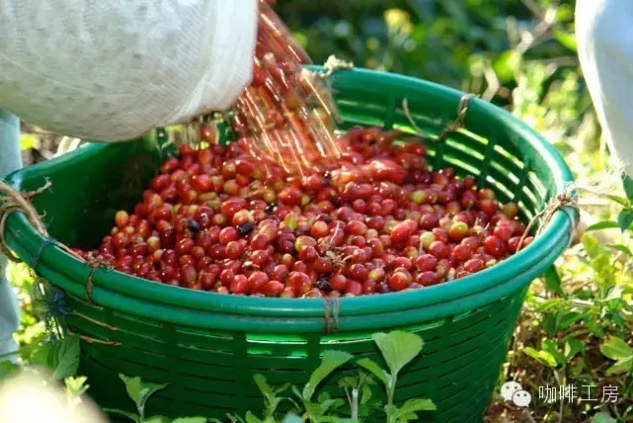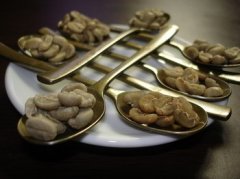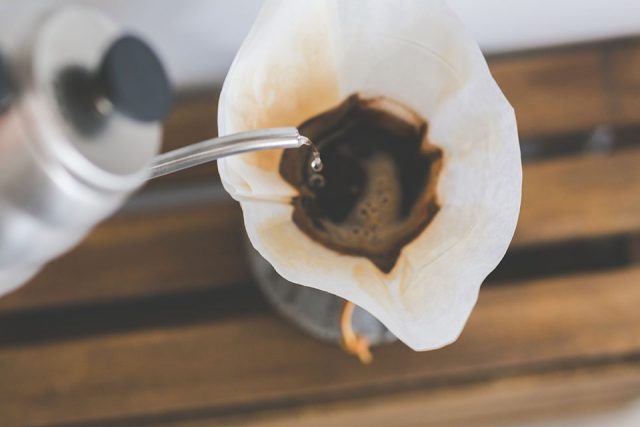A comparison of the advantages and disadvantages of the production methods of decaf Coffee
Factors affecting caffeine content, such as the type of coffee beans, soaking time, grinding thickness, cooking method, water temperature, extraction time. Wait. Caffeine has some effects on the body, which leads to the popularity of decaffeinated coffee.
Decaffeinated coffee means that before roasting, coffee is specially treated to remove 96% and 98% caffeine. A cup of coffee contains about 5% caffeine. Generally speaking, there are three ways to remove caffeine:
I. solvent extraction
Direct extraction method:
Coffee beans are softened, then heated with high-temperature and high-pressure steam to expand the bean surface and increase the contact area, then the dichloromethane (CH3CI) solvent is poured into the bean to contact with the solvent to extract caffeine.
In this method, dichloromethane is used to adsorb bean surface to dissolve caffeine, but it does not affect the flavor of coffee beans.
Indirect extraction method:
The beans are first softened and then poured into warm water, where caffeine and other ingredients are dissolved into warm water, where the solution becomes coffee essence, which is then imported into another container to add dichloromethane. After heating, caffeine will evaporate with the extraction solution. Finally, the non-caffeinated essence is introduced into the coffee beans extracted in warm water, allowing the coffee beans to reabsorb the lost ingredients.
This method uses indirect extraction, but it is easy to lose the flavor of coffee.
II. Swiss Water treatment method
Soak the coffee beans in warm water, wait for caffeine and other ingredients to dissolve into the water, filter the caffeine in the essence with activated carbon, and then introduce the non-caffeinated essence back to the previous coffee beans, allowing the beans to reabsorb the lost ingredients.
This approach emphasizes that caffeine is not extracted with any chemical solvent, which is also a choice for healthy eaters; although it is not extracted with chemical solvents, some of the ingredients of the coffee are also filtered by activated carbon, resulting in the loss of some flavor of the coffee, not only that, the low-caffeinated coffee produced by this method is also more expensive.
III. Carbon dioxide high pressure extraction
When roasting coffee beans, there is a large amount of carbon dioxide (CO2). At this time, the carbon dioxide is treated under high pressure to become liquid, and then poured into the processed coffee beans to remove caffeine, and then the pressure is released to convert the carbon dioxide into gas volatilization.
The removal of caffeine in this way will not cause damage to the coffee beans, the color will not change, and it is not easy to extract substances other than caffeine, so it can retain the original flavor of coffee beans, but because it needs a special high-pressure environment to complete it, it requires a large amount of investment in equipment. as a result, low-caffeinated coffee extracted in this way is less common on the market.

Important Notice :
前街咖啡 FrontStreet Coffee has moved to new addredd:
FrontStreet Coffee Address: 315,Donghua East Road,GuangZhou
Tel:020 38364473
- Prev

Know the varieties of Arabica coffee and the varieties evolved from Arabica
For professional baristas, please pay attention to the information of "coffee varieties" in the coffee workshop (Wechat official account cafe_style), which is not easy to be noticed by coffee users in the early days, and it is often the roasters or players who are slightly concerned about it, but they are not too deep and persistent, because the former is concerned with price and sales channels, while the latter focuses on the improvement of baking skills.
- Next

Five rules for brewing coffee and how to establish your own coffee style-"Coffee Taste"
Professional barista exchanges please pay attention to the coffee workshop (Wechat official account cafe_style) many coffee brewing methods or data can be adjusted according to each person's personal preference, experience and taste, but there are still some general principles in common in brewing coffee. Here are five points, called the "five rules for making coffee" ~ 1. Fresh coffee beans 2. Right
Related
- Beginners will see the "Coffee pull flower" guide!
- What is the difference between ice blog purified milk and ordinary milk coffee?
- Why is the Philippines the largest producer of crops in Liberia?
- For coffee extraction, should the fine powder be retained?
- How does extracted espresso fill pressed powder? How much strength does it take to press the powder?
- How to make jasmine cold extract coffee? Is the jasmine + latte good?
- Will this little toy really make the coffee taste better? How does Lily Drip affect coffee extraction?
- Will the action of slapping the filter cup also affect coffee extraction?
- What's the difference between powder-to-water ratio and powder-to-liquid ratio?
- What is the Ethiopian local species? What does it have to do with Heirloom native species?

